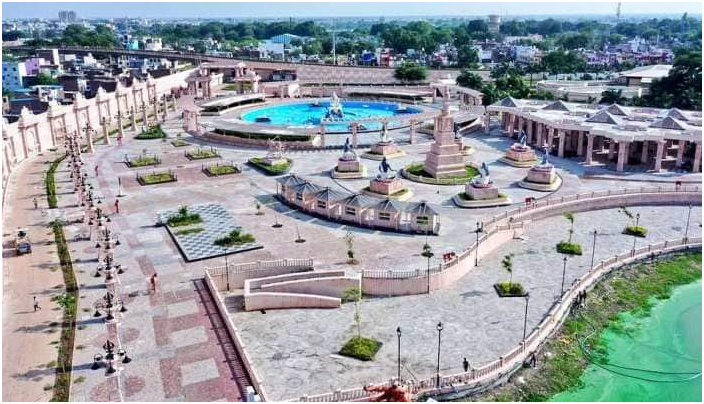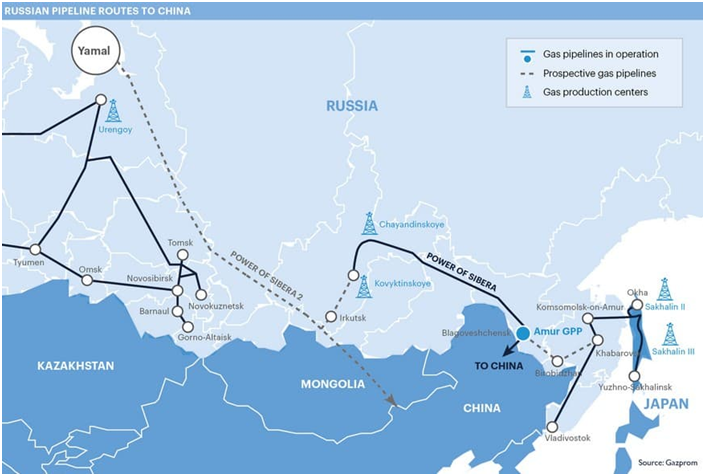Capacity Building of Bangladesh civil servants at NCGG, Mussoorie (GS Paper 2, Governance)

Why in news?
- Recently, the two-week 53rd Capacity Building programme in the Field Administration for the Civil Servants of Bangladesh was inaugurated at National Centre for Good Governance (NCGG) at Mussoorie.
- Prior to 2019, fifteen hundred civil servants of Bangladesh have been imparted training at NCGG.
Details:
- After successful completion of phase–I, capacity building of another 1,800 civil servants of Bangladeshhave been taken up, which is planned to be completed by 2025.
- This is the only institute in India to have trained 1,727 field–level officers of Bangladesh Civil Service such as Assistant Commissioners, Upa-ZilaNirbhai Officers/ SDMs and Additional Deputy Commissioners. It also imparted training to all the then active deputy commissioners of Bangladesh.
- It has been a decade since the capacity building programmeswere initiated and thus many of the trainee officers have reached levels of Additional Secretary and Secretary in the Bangladesh Government resulting in synergy in governance between the two countries.
Aim of Capacity Building programme:
- The Capacity Building programme for civil servants of developing countries aims at equipping them with cutting edge knowledge, skills and tools to deliver and design effective public policy in an increasingly complex and inter-dependent world.
- It is expected that this will achieve good governance and ultimately sustainable development apart from providing rich cross-country experience so that there is no need to reinvent the wheel.
Activities:
- The Centre is sharing the initiatives being taken in the country such as e-governance, digital India, universalisation of public services, approach to sustainable development goals, usage of Aadhar in service delivery, public grievance redressal mechanism and disaster management with special reference to coastal region among other important areas.
- During the programme, the participants will also be taken to see various developmental works like Delhi Metro, Smart city, Morarji Desai National Institute of Yoga, Central Information Commission, Election Commission of India, etc.
National Centre for Good Governance:
- The National Centre for Good Governance was set up in 2014 by the Government of India as an apex institution in the country.
- It focuses on good governance, policy reforms, training and capacity building, and to also work as a think tank.
- It has taken up capacity building of civil servants of several foreign countries in partnership with MEA.
- It has imparted training to civil servants of 15 countries such as Bangladesh, Kenya, Tanzania, Tunisia, Seychelles, Gambia, Maldives, Sri Lanka, Afghanistan, Laos, Vietnam, Bhutan, Myanmar and Cambodia. These training were found to be highly useful by the participating officers.
MahakalLok corridor in Ujjain
(GS Paper 3, Infrastructure)
Why in news?
- Recently, the Prime Minister inaugurated the MahakalLok corridor at Ujjain in Madhya Pradesh.
- The total project cost of the more than 900 metres long corridor is Rs 856 crore with the first phase costing Rs 351 crore.

Details:
- The corridor, said to be one of the longest in the country, traverses the old Rudrasagar lake which has been revived as part of the redevelopment project around the Mahakaleshwar Temple, one of the 12 ‘jyotirlingas’.
- The Mahakaleshwar Temple is dedicated to Lord Shiva and assumes importance as it houses one of the 12 Jyotirlingas in India. A jyotirlinga is a representation of Lord Shiva in Hinduism.
- The entire premises will be kept under vigil 24*7 by Integrated Command and Control Centre with the help of artificial intelligence and CCTV cameras.
- Two majestic gateways — `Nandi Dwar’ and `PinakiDwar’ — separated by a short distance have been erected near the starting point of the corridor which winds its way to the temple’s entrance.
108 pillars:
- Measuring more than 900 metres in length, the corridor will have around 108 aesthetically ornate pillars made of intricately carved sandstones that depict the AnandTandavSwaroop (a form of dance of Lord Shiva), 200 statues and murals of Lord Shiva and goddess Shakti. It will also house other religious art.
- There are 93 Shiva statues from the main door to the temple, depicting stories from Shiv Puran. Each statue/mural has a QR code. Scan the code, and get all the information about it.
Rudrasagar Lake:
- With the project, heritage structures will also be restored. Among them is the Rudrasagar Lake, which will be revived and conserved.
- A massive clean-up will be undertaken to ensure that the ponds water level and quality is maintained. As many as 152 buildings have been acquired to connect Mahakal Temple with Kshipra River.
Decongestion:
- The project also aims to ease congestion in the area, by restricting entry of vehicles into the MahakalLok area. The plan envisages expanding the temple precinct by seven times.
- It will provide decentralised parking locations at all entry points.
- Convenience shops, accommodation, emergency facilities, e-vehicles and solar parking are also there to facilitate the tourists.
Phase II:
- Under phase-II, many areas like Maharajwada, Mahakal Gate and old route, Rudrasagar, Hari Phaatakbridge, Ramghat facade, musical fountain in Rudrasagar, Begum Bagh road, emergency entry and exit of Mahakal Temple will be spruced up.
- A Kumbh Museum will also be developed.
- A garden is to be developed between the old pedestrian walkway from Mahakal Temple to Ramghat. There will be motorable light and sound shows at the famous Ramghat along Kshipra River.
Russias alternative to Nord Stream 2, a gas pipeline to China
(GS Paper 2, International Relation)
Why in news?
- Russia’s Energy Minister earlier in 2022 confirmed plans to will replace the damaged Nord Stream 2 gas link to Europe with its Asian project with China.
- Now, China and Russia are nearing the completion of a new pipeline that would send gas from Siberia to Shanghai. The pipeline on the Russian side is calledSilaSibiri or the Power of Siberia.
SilaSibiri pipeline:
- This new pipeline (3,000 km long) will connect East Siberia to Shanghai in Eastern China. The initial test flows will begin on October 25 with the flows being used to pressure test the pipeline connectors.
- The pipeline goes along the eastern edge of China, via the capital city of Beijing, and all the way to Shanghai.
- The middle phase began operations in December 2020, while the final southern part is scheduled to begin gas delivery in 2025.
Background:
- Russia began supplying natural gas to China in December 2019, as part of a $400 billion contract struck in 2014 by Russian gas giant Gazprom and China National Petroleum Corp. This contract was signed for a period of 30 years.
- By 2021, Russia had already supplied 10 billion cubic meters worth of natural gas to China. These gas supplies from Russia had been used in Northeast China's Heilongjiang Province, Beijing, and Tianjin.
How it is a small way out for Russia?
- While Gazprom and the China National Petroleum Corp. have been partnering since 2014, no one would have prophesied the significance of the line in 2022.
- Today, Russia is at risk of losing natural gas delivery contracts from the EU (European Union) and the associate countries over the annexation of Ukraine. This may impact 2/3rds of its total gas purchases.
- On the other hand, China has been having a hard look at sourcing its energy resources from multiple channels and providers.
- While the gas supplies have been going on since 2019, the volume has only now accelerated, post the Russian war on Ukraine. This looks to be a very gamed strategy by China to leverage Russia’s weaknesses.
- China also has the option of importing natural gas from another supplier, Turkmenistanwhich supplies a higher volume to China.

SilaSibiri 2:
- China and Russia have also been in discussions to build another pipeline that will probably run through Mongolia further reducing the overall cost and time of transportation of natural gas.
- While the Power of Siberia 1 line runs until Vladivostok of Russia (East of China), the new line can bisect the overall region by running through Mongolia.
- The new dedicated line will start from the Yamal-Nenets region via Mongolia to China and can handle transportation of up to 50 Bcm per annum of gas and will be called SilaSibiri 2 or Power of Siberia 2.
- If everything goes well, the construction activities may start at the end of 2024 or early 2025 and may only be completed by 2030.
Nord Stream 2:
- The Nord Stream 2 was a new export gas pipeline planned to run from Russia to Europe across the Baltic Sea.
- The decision to build Nord Steam 2 was based on the successful experience in building and operating the Nord Stream gas pipeline.
New payment mechanism:
- Gazprom and the China National Petroleum Corp have also agreed to pay each other in Rubles and Yuan as part of the policy to reduce their dependence on the US Dollar and the Euro.
- The new payment mechanism is a mutually beneficial, timely, reliable and practical solution.
Is China re-exporting Russian Gas to EU?
- Europe's gas storage is currently about 80% filled, due in part to Chinese LNG exports. As per the export data of China, Chinese LNG companies have substantially increased their gas exports in 2022 due to the vacuum created by the absence of Russian imports in the EU.
- Reports indicate that 7% of the EUs gas consumption has been met by Chinese imports. This has brought about a question as to if China is reexporting Russian gas to the EU.
- If things do continue this way, Russia may send more gas supplies to China owing to China getting more gas export requests from the EU. In the end, Russia may somewhat offset their lack of orders to an extent and China could greatly profit by reselling Russian gas supplies.
- Russia needs to be patient as China cannot ever be a partner as large as Russia for the EU to provide its energy supplies. The EU also has other partners that will try to fill the void, namely, Norway, Turkmenistan, Qatar, Israel and maybe even Iran in the future.
Blaming technology for deaths by suicide is misguided
(GS Paper 1, Social Issues)
Context:
- Every year, when the National Crime Records Bureau (NCRB) releases statistics on deaths by suicide in India, the demand to address the issue grows louder.
- One of the causes of suicide, which has been prevalent in contemporary discussions, is the expanding role of digital technologies.

Recent data:
- The most recent data for 2021, released in 2022, shows that suicide claimed 1,64,033 lives during that year.
- Two decades into the 21st century, deaths by suicide remain a major source of social distress and public policy concern in India.
Influence of technology:
- Aggravation of depression and other mental health issues leading to suicide is being repeatedly attributed to technology.
- Factors such as cyberbullying, loss of self-esteem due to social media, extreme binge-watching of online content or heavy reliance on virtual followers/communities for validation are all said to be contributing to the issue.
- It is clear that the more technology gains influence over the human condition, the starker will be its role in the best and worst of human experience.
Holistic approach:
- However, technology is neither at the core of the problem nor the perfect solution for it. Suicide is a reality which society must respond to in the most sensitive and holistic manner possible.
- It is not the case that technology has no role to play in adverse mental health conditions or related cases of suicide; the issue is the sensational and misdirected analysis of the causes of suicides. This takes the focus away from a comprehensive understanding of the issue and a more appropriate solution to it.
- For example, no one can deny the link between cyberbullying and suicidal thoughts and attempts.
- According to a study funded by the National Institutes of Health in the U.S., participants who experienced cyberbullying were more than four times as likely to report thoughts of suicide and attempts as those who did not. However, similar results are true even for those who are bullied in person.
- The conclusion is that the medium of bullying is not the sole culprit; it is the act of bullying itself that needs to be addressed. Awareness campaigns, sensitisationprogrammes, community support and counselling services are usually considered good solutions against bullying; cyber or otherwise.
The case of Tamil Nadu(TN):
- News reports regarding a spate of suicides, specifically in Tamil Nadu, also illustrate this point. Preliminary news reports associated several suicide incidents with gaming addiction, particularly with online rummy games.
- These reports elicited a heavy policy response from the Tamil Nadu government in the form of an ordinance, which banned most online games played for money, including rummy and poker.
- On closer examination, multiple independent studies found a high degree of exaggeration in reports associating deaths by suicide in the State with online rummy games.
- The real reasons for these deaths were different from those earlier reported. Moreover, experts researching suicide made a direct representation to the Tamil Nadu government on insufficient data for the correlation between suicide and online gaming.
Factors contributing to higher suicide ate in TN:
- Analysis of the data from the NCRB on deaths by suicide in Tamil Nadu makes it evident that the policy response is not adequate to address the magnitude of the crisis in the State.
- Tamil Nadu has consistently had among the highest shares of reported deaths by suicide in the country, reporting over 11% of total cases for much of the previous decade, and nearly 19,000 cases in 2021 alone.
- According to the NCRB, family problems, illness, substance abuse, and marriage/love-related issues alone contribute to more than two-thirds of the deaths by suicide in India.
Suggestions for cases like TN:
- It is incumbent upon the Tamil Nadu government to address these root causes and evolve a holistic policy response to minimise future cases.
- Rather than top-down policy formulations, focusing only on a few high-profile incidents, an inclusive community-based mental health and suicide-prevention approach may prove to be more effective in saving lives.
- Further, the State may consider how technological measures from service providers can also become a part of this policy response.
Way Forward:
- The Central government, on its part, is already embracing the potential role of technology in improving mental health outcomes for citizens.
- In February, it announced the National Tele-Mental Health Programme to provide access to free, round-the-clock mental health interventions in remote and underserved areas.
- Acknowledgement of suicidal thoughts and attempts to address a host of inter-related causes and effects are necessary to design effective and proportionate policy prescriptions. While technology is certainly an agent of this complex matrix, it can neither be seen as a root cause nor as a panacea.





